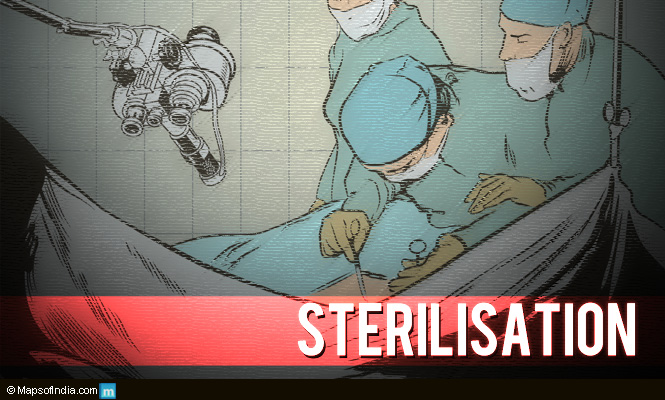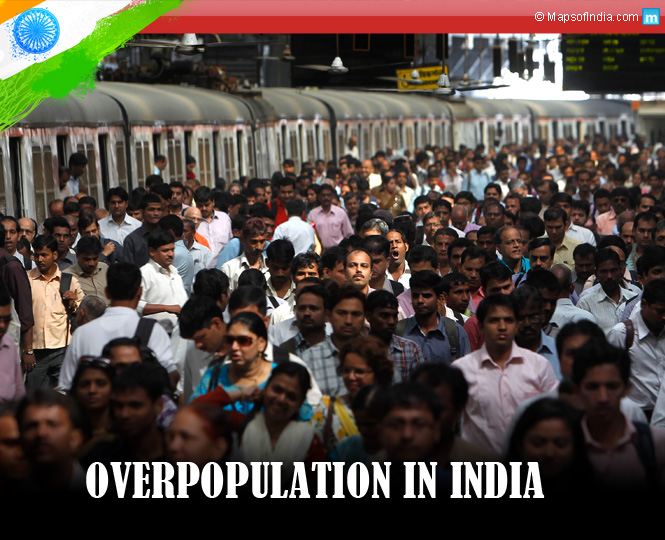Eleven women died and over 25 are in critical condition after botched up mass sterilisation surgery organised by the Chhattisgarh Government in Bilaspur district. The tubectomy was carried out on 83 women in a health camp, in 6 hours, over the weekend. Many of them had complained of severe pain and started vomiting subsequently. Those survived are in critical condition in various hospitals. This is not the first time that there are reports of deaths after sterilisation in India.
Sterilisation camps in India
The idea is to control the booming population. The concept of family planning is not new. India was the first country in the world to start a national family planning programme in the mid-1970s, during the emergency period, in which six million men underwent sterilisation or vasectomies, in just a year, in return of a compensation in the form of land, housing, and money or loans. But, later on the programme focused more on sterilizing women than men. There were 1,14,426 vasectomies in India in 2002-03, and compared to that, more than 4.6 million tubal ligations (tubectomy) were done on women, which is a more complicated operation. It has also been reported that approximately 37% of all Indian married women have been sterilised. Out of the total sterilisations, the ratio of men’s participation fell to 2.3% in December 2013. The States which take the lead in male participation are Delhi, Punjab and Assam while Bihar, Gujarat and Karnataka have fewer men participation in sterilisation.
Mass sterilisation camps are regularly organised by the State Governments and mostly women from poor families undergo the operation. With the population reaching 1.2 billion, and the large population being thought of as the major cause of poverty and other social problems in the country, the authorities have been trying to convince the rural people to have smaller families through these mass sterilisation health camps. They are promised a monetary incentive for this. The health workers who bring cases are also rewarded. While giving cash incentive for sterilisation is illegal in many countries, in India it is provided by the Government.
The questions that now arise are:
- Why there is lack of transparency of these sterilisation camps?
- Do these sterilisation camps actually help in controlling population?
- Are they clinically safe?
- If Yes, then why are there so many cases of deaths after the surgeries?
- Why only women have to undergo sterilisation when men’s vasectomy is much easier and safe?
Deaths after sterilisation: A report
According to reports, between 2003 and 2012, there were 1,434 deaths of women owing to sterilisation. In 2009, there were reports of 247 deaths, which was considered the worst year with maximum deaths. The total deaths during this period roughly sums up to 12 deaths on an average per month in the last 10 years. The top five States in India which showed the maximum deaths and negligence after sterilization under family planning programme are Uttar Pradesh, Tamil Nadu, Maharashtra, Karnataka and Andhra Pradesh.
Compensation
Usually, the Government announces compensation for the affected families. Even in the recent Chhattisgarh case, the Government has already announced Rs 2 lakh for the families of the women who died and Rs 50,000 for the others who are undergoing treatment in the hospital. But, in reality, the compensation is not paid on time. During the period 2007 to 2012, only 777 cases of compensation were paid for 942 deaths.
Dangers at the sterilisation camps
- There are many cases of accidental deaths, negligence, severe pain, agony and bleeding after sterilisation in women. In 2012 in Bihar, three men were arrested for doing surgery on 53 women in 2 hours in an open field, that too, without using anaesthetic.
- Though, the authorities claim that the surgery is voluntary, yet many say that most women are being forced into sterilisation for Government incentives and benefits.
- One main cause of sterilisation deaths is due to the pressure on the State and district health workers by the State health ministry to achieve the set annual target of sterilisation. Senior officials also sometimes threaten these health workers on the grounds of reducing salary or to suspend or dismiss them. Hence, there are bound to be medical lapses. Most surgeries are done just to achieve the targets without any proper hygienic and safety methods. In fact, from 2003 to 2012, the Central Government had spent Rs 68 crore as compensation for sterilisation.
- Care for the women who undergo surgery is inadequate. Sometimes the health workers are not properly qualified. Moreover, there are no proper facilities to offer post-surgical care.
- The sight of these sterilisation camps is very hard to believe with a few tables set next to each other, blood-stained sheets, the health workers and helpers without protective masks, tools rinsed with only hot water, no use of antiseptics, and many more such unhygienic issues.
- Sterilising a man through vasectomy is a much simpler and safer procedure. But the number of men who opt for sterilisation is very low. They do not participate due to fear of physical weakness, social stigma and impotency.
- Most women who come to these mass camps are poor and illiterate and hence are unable to voice their consent and follow what their husbands tell them to do so.
It’s high time now that the Government came up with a more appropriate sterilisation and population control policy. The mass sterilisation programme in India is still controversial. Although there may be some benefits of stabilising the population to a certain extent, sterilisation is not the end solution to control population. This controversial State-run programme should have more clear-cut achievable targets, clear objective and a more appropriate procedure to undertake mass surgeries in a hygienic environment so as to avoid a grave human tragedy. India should now aim for population stabilisation. The population policy needs to be checked, and women who undergo sterilisation must be able to make an informed choice.






